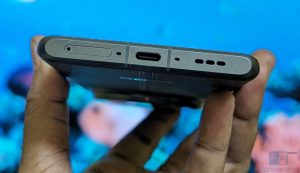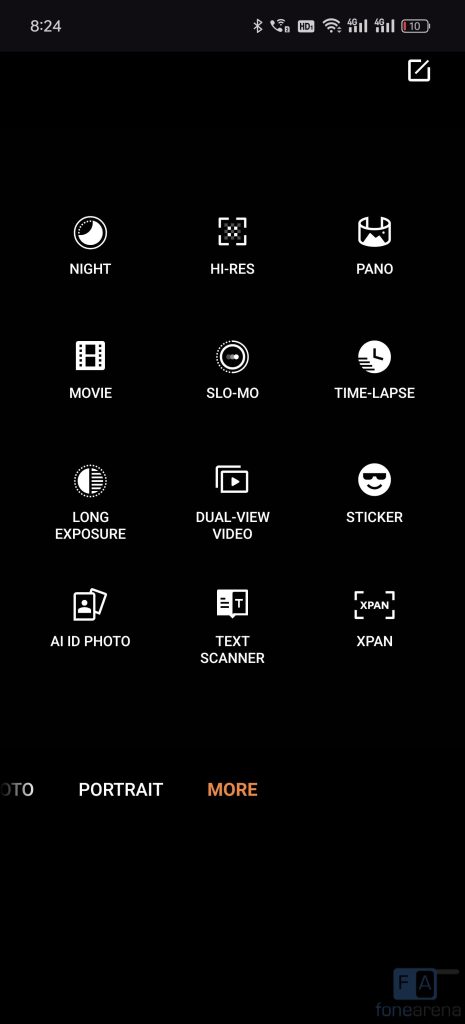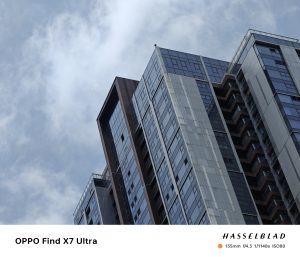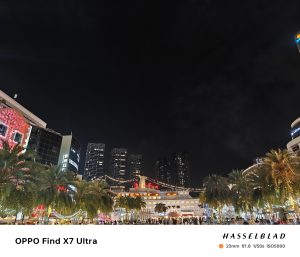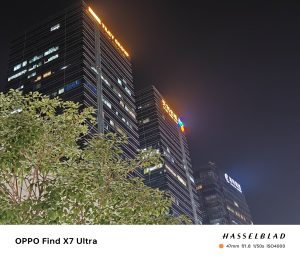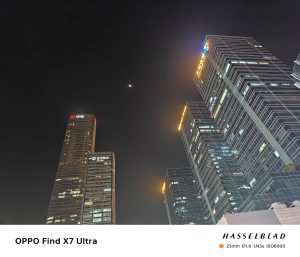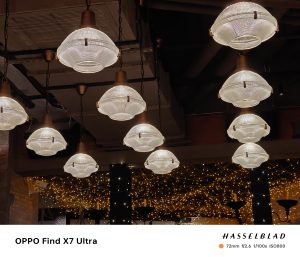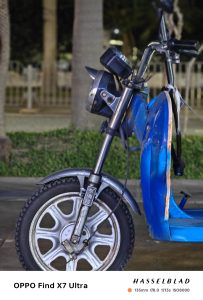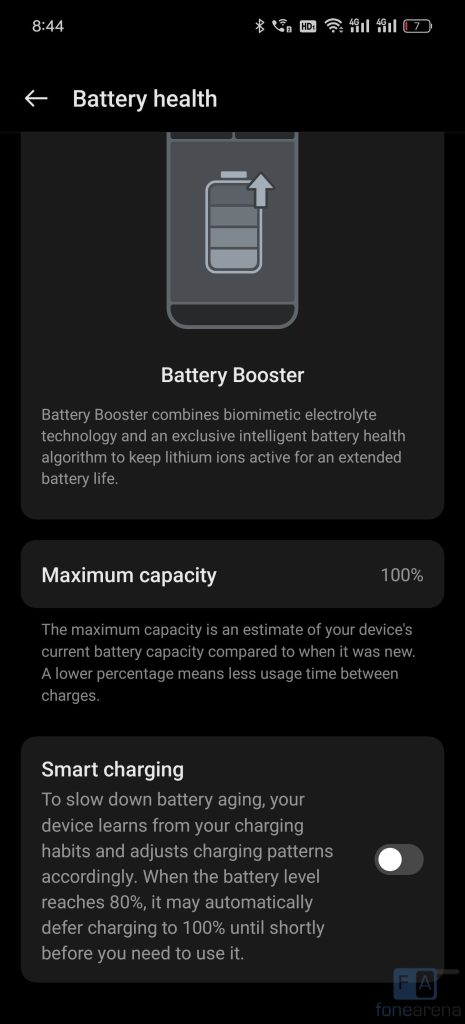
OPPO launched the Find X7 series smartphones in China earlier this year. This year the company introduced the X7 and the X7 Ultra instead of Pro since it is a major upgrade. We have the Find X7 Ultra, the company’s camera-centric flagship. This gets a better screen, latest SoC, and a quad 50MP camera setup. Let’s dive into the review to find out what the company has to offer.
| Box Contents |
| Camera |
| Battery Life |
| Conclusion |
Box Contents

- OPPO Find X7 Ultra 12GB + 256GB in Tailored Black colour
- 100W SuperVOOC fast charger
- USB Type-C cable
- Protective case
- SIM Ejector tool
- User guide
Display, Hardware and Design

The OPPO Find X7 Ultra sports a 6.82-inch (3168 × 1440 pixels) Quad HD+ curved LTPO AMOLED display with 1-120Hz refresh rate. You can select standard FHD+, switch to Quad HD+ or use auto select. The display has Corning Gorilla Glass Victus 2 protection.
The display is bright since it has peak full-screen brightness of up to 1600 nits in direct sunlight and up to 4500 nits local brightness when viewing HDR content. It also offers different levels of brightness adjustment. It offers good colour output since it has 100% DCI-P3 color gamut. You can select from vivid, Natural and Pro screen colour modes.
The phone also has HDR 10 and Dolby Vision support. Since this is a Chinese model, these don’t work in apps like Netflix that are not available in China, but it works in YouTube. There is also video color boost and image sharpener options.
The phone has ultra narrow size and bottom bezels. It has X-axis linear vibration motor. The phone has a tiny punch-hole that houses a 32-megapixel autofocus. Above the display, there is an earpiece on the top edge and works as a secondary speaker. It has an in-display fingerprint scanner.
Coming to the button placements and ports, the power button is present on the right side along with the volume rockers. The alert slider that has a nice golden finish is on the left, and there is a new VIP mode enabled when slide all the way, that disables the camera, location access, and microphone for extra privacy.
The dual SIM slot, primary microphone, USB Type-C port and the loudspeaker grill are present on the bottom. The secondary microphone is on the top, along with an IR blaster. It has a solid metal frame.

The phone has a curved vegan leather finish on the back. In addition to the Black colour, it also comes in Ocean Blue and Sepia Brown colour. Even though the phone has round corners and a matte finish on the sides, it offers a good grip and a solid feel. The phone weighs 221 grams and is top-heavy since there are huge cameras. The phones doesn’t miss out on the IP68 ratings for the dust and water resistance.
Camera

- 50MP camera with 1″ Sony LYT-900 sensor, 1G+7P lens, f/1.8 aperture, OIS
- 50MP 123° ultra-wide camera with f/2.0 aperture, autofocus, 4cm focus distance, 1/1.95″ Sony LYT-600 sensor
- 50MP 3X periscope telephoto camera with ƒ/2.6 aperture, 1/1.56″ Sony IMX890 sensor, 25cm focus distance, OIS
- 50MP 6X periscope telephoto camera with ƒ/4.3 aperture, 1/2.51″ Sony IMX858 sensor, 35cm focus distance, OIS
- 32MP front camera with Sony LYT-506 sensor, autofocus, f/2.4 aperture
The camera UI in the ColorOS 14 is familiar. There is a new Master Mode calibrated to match the characteristics of the iconic Hasselblad X2D 100C. In addition to RAW, there is a RAW MAX mode that stores the original, unprocessed image data from the camera sensor. This allows for unparalleled flexibility in post-processing, enabling adjustments to color balance, exposure, and more.
You also get Night mode, Hi-Res, Panorama, Movie, Slo-mo, Time-lapse, Long Exposure, Dual-View video, Sticker, AI ID Photo, Text Scanner and XPAN. The phone uses Hasselblad color science and HyperTone Image Engine.
Daylight shots were brilliant with a lot of details, thanks to the 1″ sensor, and the dynamic range is better with auto HDR. The ultra-wide is good, but the Find X6 Pro used a slightly bigger IMX890 sensor while the X7 Ultra moves to a slightly smaller LYT-600 sensor, but this has a wide f/2.0 aperture, an upgrade from f/2.2.
Even though the phone retains the 3X periscope telephoto camera from the X6 Pro, the new 6x periscope telephoto camera is the best compared to other cameras in the market. Even at 20x zoom and beyond, the details are good, thanks to computational photography.
The portrait does a good job in 1x, 3x and 6x modes. Low light shots are good with a lot of details and less noise. The night mode is useful and 32MP auto front camera does a good job. The bokeh shots good with good edge detection.
Check out the camera samples
It can record videos in up to 4K 60 fps, slow motion 1080p at 240fps, 720p at up to 480 fps, and the front camera can also record 4K 60fps videos. All the four rear cameras support Dolby Vision HDR video recording.
There is OIS and EIS, which does a good job. The phone also has portrait video recording, but it is limited to 1080p, which is a bummer.
Software, UI and Apps
It runs Android 14 based ColorOS 14 out of the box. The phone will get 4 Android updates and 5 years of security updates, similar to the older OPPO flagship. ColorOS 14 brings optimized Aquamorphic Design, smart AI features, improved self-developed technology for smooth performance, and enhanced safety and privacy tools. Since this is Chinese version, there are features like Breeno Touch, Smart Image Matting, and more.
The File Dock feature enables collection, analysis, and sharing of global information through the Dock or other applications simply by making gestures.
Since this is the Chinese model, there are a lot of preloaded apps, and it doesn’t have Google Play Store or Google apps. The preloaded apps can be uninstalled, but come back once the phone is reset. The IR remote app is useful.
Out of 12GB LPDD5X RAM, you get 10.99GB of usable RAM, and about 6GB of RAM is free when default apps are running in the background. It also has DRE or dynamic RAM expansion feature, which uses the built-in storage as RAM. This has up to 12GB of additional RAM expansion. Out of 256GB UFS 4.0 storage, you get about 217GB of free storage.
Fingerprint sensor and Face unlock
It has an in-display fingerprint sensor that unlocks the phone quickly, but it still has an optical fingerprint scanner, and doesn’t use an ultrasonic scanner. You can add up to 5 fingerprints. You can also use the fingerprint for app local and payments in apps.
Furthermore, you can change the fingerprint animation and also disable it, and also enable quick launch option to launch apps directly from the lock screen by holding the fingerprint. The phone also has face unlock feature.
Music and Multimedia
It has Dolby Atmos which works with headset and has customizable Smart, Movie, Game and Music modes. It doesn’t have FM Radio support. Audio through the stereo speakers is good without any distortion even in full volume. Audio through earphones is good as well.
This has Widevine L1, so that you can play HD content on streaming apps. Even though there is HDR and Dolby Vision support, HDR works on Netflix, and there is no HDR or Dolby Vision in Netflix since the app is not available in China.
Dual SIM and Connectivity
The OPPO Find X7 Ultra has support for a lot of 5G bands, and it worked for me in China, Hong Kong, Thailand and of course India without any issues. It has 4G Wi-Fi and VoLTE, with support for Carrier Aggregation on 4G, but it lacks eSIM support. Other connectivity options include Wi-Fi 7 802.11 be (2.4GHz + 5GHz), Bluetooth 5.4, Beidou (B1I+B1C+B2a), GPS (L1+L5), GLONASS (G1), GALILEO (E1+E5a), QZSS (L1+L5), dual-antenna NFC, USB Type-C. It has OTG support, and NFC support. Moving on, the call quality is good, and we did not face any call drops and the earpiece volume was loud.
Performance and Benchmarks

The OPPO Find X6 Ultra was one of the first phones to use the Snapdragon 8 Gen 3 Mobile Platform when it was introduced earlier this year. It has a new 1-5-2 microarchitecture that uses 1 x Kryo Prime CPU (Arm Cortex-X4 based) at up to 3.3GHz, 5 x Kryo Performance CPUs (3 x Arm Cortex-A720 at up to 3.2GHz and 3 x Arm Cortex-A720 based at up to 3GHz), 2x Kryo Efficiency CPUs (Arm Cortex-A520 based) at up to 2.3GHz.
It is fabricated using the TSMC 4nm Process Technology, same as Snapdragon 8 Gen 2. It promises 30% performance improvements and 20% improved power efficiency.
The phone has aerospace-grade cooling system that includes, 7930mm² extra large VC cooling. We did not face any issues or frame drops in the graphic-intensive games like COD, BGMI and Genshin Impact. Thermal throttling was there. In 3D Mark wild life stress test, it scored 54.8%, and the temperature shot up from 37 to 48 degrees.
Check out some synthetic benchmark scores below.
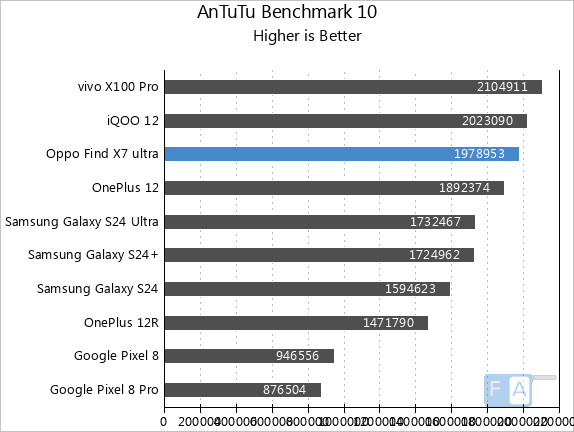


Battery life
Coming to the battery life, the phone packs a 5000mAh (typical) battery, same as the Find X6 Pro, but this is slightly smaller than the other competitors. It can easily last for a day, but it could have been better.
I got about 6 hours of screen on time over a day’s use, mostly on Wi-Fi, and occasional 5G use in 120Hzin QHD resolution. Since the phone has support for 100W SuperVOOC fast charging, it can charge from up to 100% in less than half an hour. There are smart charging, option to stop charging at 80%, and the smart rapid charging can charge the device faster if the battery is too low.
The phone has 50W wireless flash charging, and also supports wireless reverse charging. It can be charged up to 100% in less than an hour with a wireless charger, if you are ready to spend more of the official wireless charger, since it is proprietary.
Conclusion
The OPPO Find X7 Ultra is a massive upgrade to the Find X6 Pro when it comes to camera. The display, performance and user experience are also good. Battery life could have been better, and the phone is limited to China.
The phone was launched in China starting at 5,999 yuan (USD 827 / Rs. 70,445 approx.) for 12GB + 256GB. In India there is Xiaomi 14 Ultra and vivo X100 Pro, both with an 1″ sensor giving a touch competition under Rs. 1 lakh price range for the 16GB + 512GB.
Pros
- 2K AMOLED 120Hz LTPO display is brilliant
- Smooth performance and good gaming performance
- Brilliant cameras
- Solid build quality, IP68 ratings
- 100W fast charging, 50W wireless charging
Cons
- Portrait video is limited to 1080p
- Battery life could have been better
- Limited availability





